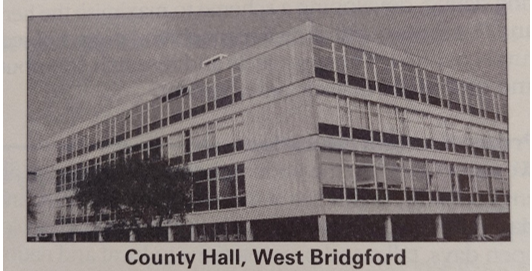What is a ‘CLASP’?
- Posted in:
- NewsletterArchive
- HistoricBuildings
This educational article comes from our Spring 2002 newsletter:
In the late 1950’s, local authorities around the country were faced with the task of providing large numbers of new public buildings to cater for the growing local populations. There was a greater demand for primary schools at this date than at any other time in the 20th century and in Nottinghamshire, many areas experienced rapid urban growth as a result of the coal mining industry.
‘CLASP’ buildings were the result, it stands for 'Consortium of Local Authorities Special Programme' and was in essence a collaboration between the architects of county authorities. Nottinghamshire County Council’s architects took a lead role from the outset, and in particular, Henry Swain led the way with new and innovative designs that answered the many demands they faced. These buildings had to be built quickly, to a high quality and within a tight budget. They were also faced with a considerable technical problem caused from mining subsistence, which the new buildings needed to be able to withstand. The solution up until then had been to use massive concrete foundations, but these tended to break-up under the pressure.
Henry Swain and his colleagues’ solution was revolutionary. They designed a lightweight steel frame that clipped and bolted together, with large panels between. These buildings were laid on foundations of sand so that if a wave of mining subsistence passed underneath, the building moved gently to accommodate it, as if surfing over the top. All the components were designed to be easily prefabricated allowing mass production and keeping costs down.
At the time, this CLASP system was acknowledged by experts for its innovation and was used throughout the country to great effect. CLASP technology won a number of Royal Institute of British Architects awards and Henry Swain’s contribution was acknowledged internationally with the Hold Medal at the Milan Triennale in 1960.
Henry Swain was the Deputy County Architect from 1958 and then County Architect from 1964-68, during which time he was also the vice-president of RIBA in 1967/68. He died in Nottinghamshire in January 2002, aged 77. His legacy of public buildings are all around us and make an important contribution to Nottinghamshire’s communities. Many people work, socialise, and learn in them every day.

Examples of CLASP schools can be seen in Ollerton, Carlton (Frank Wheldon), Bingham (Toothill), East Retford (King Edward VI), Skegby, Arnold (Redhill), Mansfield (Berry Hill). Health centres and other buildings include: Mansfield Health Centre (St John’s Street); County Hall extension, West Bridgford (the County Council’s own HQ); South Manor, Ruddington; Sherwood Lodge Police HQ; The Sutton Centre, Sutton-in-Ashfield. There are many more CLASP buildings across the county. To find more records, search 'CLASP' in our search bar here and look for the records that say 'Building'.
